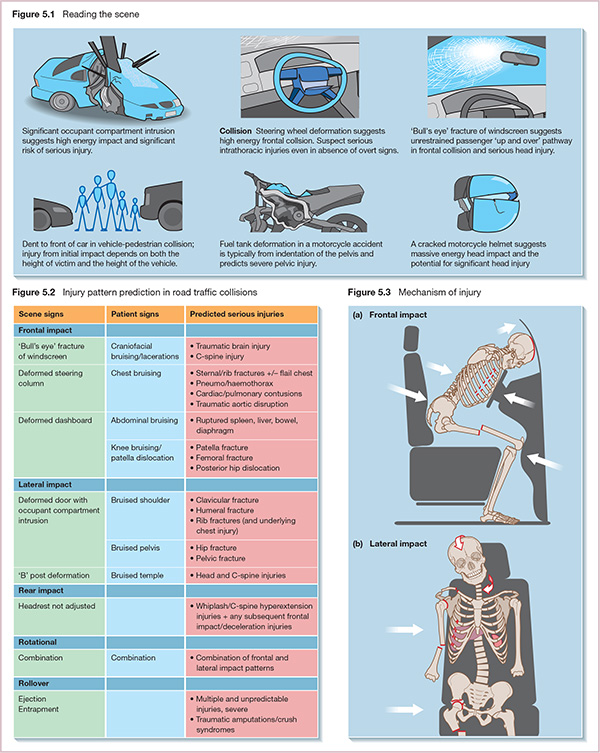5 Trauma is tissue disruption that occurs when external energy is transferred to the body at a magnitude and/or rate greater than the ability of the tissue to absorb and dissipate it. The greater the total energy transferred, the greater the damage to the affected tissue. Most trauma results from collisions between two physical bodies, e.g. patient and vehicle or bullet and patient. As kinetic energy = ½ × mass × velocity2, the greatest determinant of kinetic energy transfer is velocity. However, the precise way in which the kinetic energy is transferred to the patient determines the ultimate injury sustained. The mechanism of injury refers to the manner in which trauma has occurred and is pivotal in predicting the likely pattern of injury, e.g. in road traffic collisions or assaults. Kinematics refers to the action of forces involved at the time of injury and is useful in the prediction of the type, extent and severity of injury, e.g. a fall from height is much more likely to result in complex polytrauma with immediately life-threatening injuries than a fall from standing. In the pre-hospital environment, the witness will often provide only limited and fragmented information. Therefore, careful analysis of the accident site yields many critical clues (Figure 5.1) regarding kinematics and mechanism of injury, which directly influence clinical decision making through prediction of likely patterns of injury. The pre-hospital care practitioner must stop to carefully read the scene to glean as much information as possible. This step is every bit as crucial as the rapid initial ABCDE assessment. Blunt trauma occurs whenever excessive energy transfer causes tissue disruption without skin penetration, as the force is distributed over a relatively large area.
Kinematics and mechanism of injury

Energy transfer in trauma
Reading the scene
Blunt trauma
![]()
Stay updated, free articles. Join our Telegram channel

Full access? Get Clinical Tree








